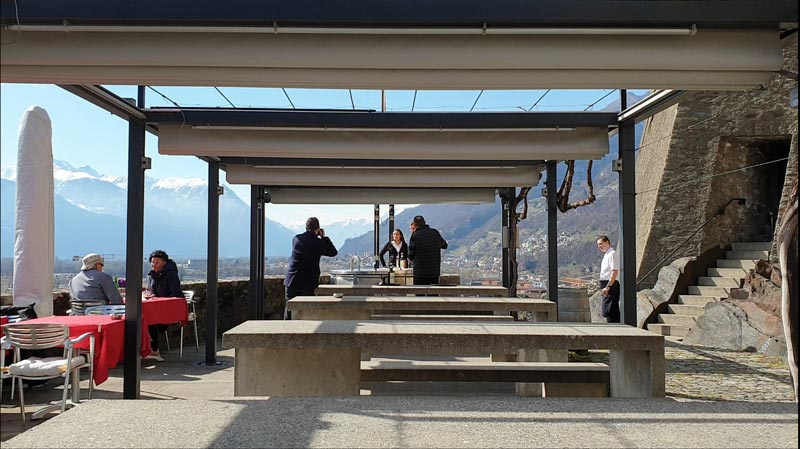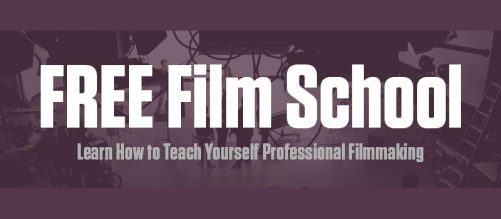FREE Film School: Everyday Smartphone Filmmaking Exercises
Find out how to become a better filmmaker by doing a little bit, every day. In the past, filmmaking exercises involved digging out a camera and loading it with film. That’s if you had some, otherwise you’d need a trip to the shops first.
And 1 roll of Super 8mm film only lasted 4 minutes. So, unless you were wealthy enough to buy a bunch of rolls of film, you had to stop practising after 4 minutes shooting. Then you had to wait a few days, or weeks, before your roll of film returned from the lab.
Before digital video, the idea of filming every day would have involved a great expense and a house full of rolls of film. And before smartphones were invented, you still had to think to take a camera with you. With smartphones, that’s all changed.
And this is how you can make the most of the high definition video camera in your pocket.
A Sketch a Day…
I only managed a year of art college. This was back in the 1980s and I was still a teenager. And in those days college was “free” for us Brits. But a year was enough to convince me that if I wanted to learn something, I would rather just teach myself. 23 years before YouTube was invented.
Personally, I like to learn “on the job”. Probably because I find it hard to motivate myself when the work is just an exercise and/or theoretical study. Perhaps that impatience cost me time in the long run, because I expected to be good at things right away and that’s just not possible for most of us mortals.
Anyway, one thing I remember from art school was being told as art students we must always be sketching. Our tutors stressed to us many times that we really must carry a sketch pad with us at all times. And that every spare moment should be an opportunity for a sketch.
More Haste, Less Speed
As an 18 year old I was very pfff about that instruction (and most other instructions, to be honest). However, I did actually carry a sketch pad around and once in a while sketched something in it. And over the year I got a bit better at sketching stuff.
With maturity and hindsight, I now understand why our tutors made such a big point of this. Possessed by youthful impatience, I just wanted to get on with “real art”, not this boring practice. However, that real art I was doing consistently failed to achieve the greatness I hoped it would.
As it turns out, great things come from repetition.
Look back through history and you’ll find that pretty much everyone who achieved great things did so by quietly repeating some “boring” activity or other. For years. Sometimes decades.
The problem with filmmaking is you can’t really do spontaneous sketches like I did as an 18 year old with a sketchpad and pencil. Until now, that is…
Smartphones to the Rescue
The point my art tutors were trying to impress on us is, even if you aspire to be the next Andy Warhol or Tracey Emin it’s actually the boring repetition which gets you there. And it’s not just about learning the physical skill of sketching. The practice exercises your creative muscle and gets you looking at the world as an artist.
Now, with our smartphones at our fingertips pretty much 24/7, filmmaking exercises are much easier. Thing is, you can practice videography with your smartphone any time you have a spare moment. In the last 3 or 4 years, I’ve been doing this myself and really enjoying it.
Filmmaking Exercises: suggestions
I’m just going to throw some thoughts out there for you. But really, if you want to learn to be a better filmmaker, take any opportunity to practice some filmmaking exercises. Basically, if you’re always thinking of a potential “nice shot” you’re thinking like a filmmaker.
- Family gathering. Make sure you offer to be the one who takes the videos and photos. Most of the time people find this to be something of a chore so they’ll be happy when you volunteer. But instead of the usual bad family video, take your time and think about your shots. I quite often film a family gathering while people are not aware, so I capture them more naturally. But I also think about framing and lighting, and try to get the best shots I can.
- Holiday/Vacation. A couple of days ago, I went on a mountain walk and I watched a tourist filming with her smartphone. She did the usual thing, with the camera roving all over trying to capture the whole experience in one shot, but in a very unthinking way. So don’t do that. Again, think about your shots. Think about how they might edit together. You see, if you know you’re going to edit this later, you won’t need to move the camera around wildly, trying to capture everything. Your shots might come out like this:
- shot of the public hiking sign (still shot)
- shot of your friend or partner walking up the mountain ahead
- slow pan across the landscape
- close up detail of wild flowers (in focus) with mountains in the background (out of focus)
- and so on…
- Going to work. Why not leave 20 minutes early so you have time to frame some nice shots? Illustrate your journey to work in say 10 shots that give the viewer a glimpse into the experience.
- At work. Again, don’t just capture some ugly random video. Take some time and think up some interesting shots that describe the experience of your work day. Use light, framing, camera movement creatively. You don’t have to spend ages thinking up the shots, but video-sketching requires you to stop and think a little bit.
- Hobby activities. Capture some shots which describe your activity or experience, but which are more thought out and creative. Wildly roving camera is forbidden, unless you are doing it deliberately for creative reasons.
- Going to the theatre/cinema/sport game. As above, describe the experience with some thought out sketches.
Tip 1: each shot has 3 parts
In your filmmaking exercises, to help avoid the roving eye shot, think of each shot as a beginning, middle and end. Where does the shot start and where do you take the viewers?
Tip 2: pause the beginning and end
Quite often when non-filmmakers are shooting a pan shot with their smartphone they start recording, immediately pan and as soon as they’ve reached the destination of the shot, they hit stop. This means what you are presenting to the audience is all pan shot. But a pro filmmaker will pause on the first frame, pan to the second frame, pause again, then hit stop.
Remember, the audience need to see your first frame and your last frame, and they need time to take in what they see. Imagine you are showing someone 2 photos (the pan part if the transition between the two). If you just flash the 2 photos in front of their eyes for a second, they won’t have a clue what you just showed them.
Instead, do this:
- Frame your first shot.
- Hit record.
- Count to 5.
- Pan to your end frame.
- Count to 5 again.
- Hit stop.
Now, when you come to look back at this shot later you will see the difference. The shot will look planned. And what you want the audience to see will be clearer.
In fact, if you keep doing this, you will start to think differently about your shots. You will start to think, “why am I going from here to there?” In other words, you’re now thinking like a filmmaker.
Sketches can inspire bigger stories
While you’re shooting these little sketches, probably involving your friends and family, you might start to get ideas for stories or characters. They might help unblock a story you are working on.
This is especially true if you quietly document events with people being themselves, rather than make them aware you’re filming them.
For example, today we walked up to a restaurant in an old castle. The place was quite quiet and the manager was teaching a young guy how to be a waiter. But he just couldn’t stop himself interfering, even though the young guy was doing fine. And I noticed the manager wasn’t all that good at being a waiter himself, spilling my water as he poured it.
Then, a young glamorous looking couple with another guy sat at a table nearby. The couple looked like they’d just stepped out of a magazine photo shoot. Sure enough, the other guy pulled out his Nikon and they started shooting some tourism promo photos.
At this point, the restaurant manager couldn’t help but get involved (uninvited). He started moving things around, designing the “set”. Then he grabbed the photographer’s reflector and started “helping”… Well, it was an interesting scene with an interesting mix of characters.
So I take the opportunity to film all this as it’s taking place, using the architecture to create a nice frame. Here’s a frame from the video I shot.

You can see the couple in the background. The restaurant manager is in the centre, holding the reflector. The student waiter watches on from the right of the frame…
Anyway, maybe this will become an inspiration for a script or a film, or maybe a scene in something I’m working. Maybe it won’t. But I have a record of these characters to use later, if I wish. And more importantly, I kept my filmmaker eye working. All it took was jumping up with my phone and filming for a minute or 2.
Filmmaking Exercises Make a Better Filmmaker
The mistake we make is we think great filmmakers make great films, with huge budgets, featuring superstars. The truth is that becoming a better filmmaker is about doing lots of little things, over and over. Until we get better.
The story goes that the reason George Best was one of the greatest football players ever to play the sport was down to him practicing alone, using both feet. Most likely his friends didn’t have the determination to keep practicing like him. Most likely, like when I was an impatient 18 year old, they found it boring after 10 minutes. Because, when we see a star soccer player doing incredible things on the pitch, we don’t see the relentless practice they’ve been doing every day, for years previously.
But the truth is, it’s not boring. Once you start to think this way, you can get addicted to capturing every moment in your life with the best shots you can come up. You can use auto settings for speed or you can boot up a camera app, if you want the extra control.
Eager to learn more?
Join our weekly newsletter featuring inspiring stories, no-budget filmmaking tips and comprehensive equipment reviews to help you turn your film projects into reality!
Simon Horrocks
Simon Horrocks is a screenwriter & filmmaker. His debut feature THIRD CONTACT was shot on a consumer camcorder and premiered at the BFI IMAX in 2013. His shot-on-smartphones sci-fi series SILENT EYE featured on Amazon Prime. He now runs a popular Patreon page which offers online courses for beginners, customised tips and more: www.patreon.com/SilentEye



Very useful.
Once again a very good read, Thank you. I need to practice more than I have been.
About to take another trip to an overly popular tourist spot. In preparation, I need to get into shape, involving lots of walking and standing. As part of this prep, I also wanted to practice videography. Your one page has inspired me to follow the essence of what to practice! Thank you!
great to hear Rob!